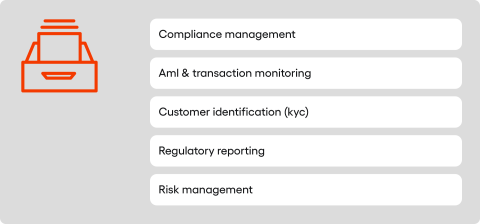What is RegTech? A clear overview of regulatory technology solutions


A true regulatory tsunami has been unleashed since the 2008 financial crisis. Every 7 minutes—that’s how often a new rule is introduced, part of a staggering 500% increase in legislative changes over the last decade, according to one analysis. For any business, navigating this dense and chaotic thicket is a monumental challenge.
The answer? RegTech. This is a sector that is growing fast and offers a lifeline. Here, we will look at this phenomenon, including its applications, its real-world benefits, and the biggest challenges it presents.
What is RegTech?
RegTech, which is short for regulatory technology, is simply a part of the FinTech world that uses modern technology to make following legal rules easier and more automatic. It really started to grow after the 2008 global financial crisis. That event kicked off a period of much stricter supervision by authorities and a huge number of new regulations.
You can think of the wider FinTech category as anything to do with digital technology in financial services. RegTech, on the other hand, is focused on one specific job: helping companies manage their compliance with the rules and lower their risks. It works like a safety layer, making sure that new financial innovations can be introduced without breaking the law.
The use of this technology is not just for the financial sector. Its tools are now being used more and more in other industries with lots of rules. This includes places like healthcare, energy, and transport.
Evolution and growing importance in digital finance
The main reason for RegTech’s existence and growth is the ‘regulatory tsunami’. The size of this trend is easy to see in the numbers. Global regulatory alerts went up from 8,700 in 2008 to more than 64,000 in 2021. The rapid pace means that trying to track and apply these changes by hand is not just inefficient; it’s almost impossible.
As a reaction to this, the global RegTech market is growing very quickly. Forecasts from different research firms might vary on the exact value of the market, but they all agree that it is expanding fast.
Global RegTech market forecasts (2023-2035)
| Source | Base Value (USD) | Forecasted Value (USD) | Forecast Period | CAGR (%) |
| Fortune Business Insights | $15.80 billion (2024) | $82.77 billion (2032) | 2025-2032 | 22.8% |
| Grand View Research | $17.02 billion (2023) | $70.64 billion (2030) | 2024-2030 | 23.1% |
| Maximize Market Research | $9.12 billion (2023) | $25.87 billion (2030) | 2024-2030 | 16.06% |
| Facts & Factors | $13.27 billion (2023) | $86.45 billion (2032) | 2024-2032 | 23.15% |
| Roots Analysis | $14.69 billion (2024) | $115.5 billion (2035) | 2024-2035 | 20.62% |
| Juniper Research | $83 billion (2023) | $207 billion (2028) | 2023-2028 | ~20% (Implied) |
The big differences in these forecasts don’t mean the data is bad. They just show that the market is very active and still taking shape. Different research firms use different methods and look at different things in their analysis.
Some firms look only at financial services compliance. Others, like Juniper Research, include more industries like cybersecurity and gaming, as well as different types of spending.
For people making strategic decisions, the key point isn’t one single ‘correct’ number. It’s that everyone agrees the market is on a strong growth path, with the compound annual growth rate (CAGR) expected to be between 16% and 25%.
Investors feel confident about the sector too. Reports from KPMG show that global investment in RegTech hit a record of $18.6 billion in 2022. This was up from $11.8 billion in 2021 and was unusual because overall FinTech investment fell that year.
Even though investment dropped to $7.4 billion in 2023 because of a cooler market, there was still a strong focus on RegTech tools that use artificial intelligence.
Key goals: automation, efficiency and cost reduction
The main reasons for using RegTech are to automate compliance tasks that take up a lot of time and to make operations more efficient. Another big objective is to lower the huge costs of following regulations and paying fines for not doing so.
The penalties for not being compliant are harsh. In 2023, the U.S. Securities and Exchange Commission (SEC) handed out fines adding up to more than $5 billion. In 2020, regulators around the world fined banks over $14 billion, mostly for problems with anti-money laundering (AML) rules.
A report by IBM also showed that data breaches linked to non-compliance cost companies about $560,000 more on average than incidents where rules were followed.
At the same time, the cost of staying compliant is very high. Financial firms use between 10% and 15% of their staff for compliance work. Salaries for experienced compliance experts are also expected to go up, with 61% of firms expecting this to happen in 2023. RegTech’s job is to cut down these staff costs by using smart automation.
Main areas of RegTech application
The RegTech market can be split into a few key areas. Each one deals with specific regulatory problems. Looking at these parts helps to see where the technology adds the most value.
Compliance management
Managing compliance is always named as the biggest part of the RegTech market. The data from the market backs this up.
Roots Analysis said this segment will have a 36.81% share of the market by 2035. IMARC Group reported it was the leader in 2024 with a 40.8% share. Straits Research also said this segment has the biggest market share.
Tools in this area automate the job of watching for regulatory changes and connecting them to a company’s own rules and ways of working. This makes sure the organisation stays compliant across different countries.
Transaction monitoring and anti-money laundering (AML)
Dealing with the risks of money laundering (AML) and financial fraud is what RegTech was built on. It is often named as the second-biggest part of the market. The main benefit modern technology brings here is a huge drop in the number of false alarms, or ‘false positives’, which are a big problem for older, rule-based systems.
A study in 2023 by Forrester Consulting found that systems using artificial intelligence can cut down on false alarms by up to 70%. One RegTech provider, Tookitaki, says its products can lower false alarms by 70-90%.
Better analytics doesn’t just reduce wrong alerts; it also makes it much easier to spot complicated criminal plans. Analyses by McKinsey & Company show that using these kinds of systems can raise fraud detection rates by up to 75%.
Regulatory risk management
This area is all about finding, checking, and reducing risks that come directly from not following the rules. These risks can be operational, legal, or damage a company’s reputation. The growth here is closely linked to the rise in cyber-attacks and data breaches, which have serious regulatory results.
Regulatory reporting and data analytics
RegTech makes the process of creating and sending reports to regulators automatic. This means less manual work, a smaller chance of human mistakes, and reports that are on time. A key part of this is advanced analytical tools.
These tools let companies look at huge amounts of data to find risks, see patterns, and make smart, forward-looking decisions. A study by IBM found that 42% of people asked believe artificial intelligence will have a big effect on checking data for regulatory reports.
Customer identification and verification (KYC)
The process of signing up and checking a new customer, known as Know Your Customer (KYC), is one of the most costly and long-winded jobs in a financial company. RegTech makes this much better.
Automated KYC can make customer onboarding 70% shorter. One case study by Nexus FrontierTech found a 30% cut in onboarding time, while making the process five times faster. Encompass Corporation says its tools lead to an average 32% reduction in total onboarding time.
A normal onboarding for a corporate client can take 90 to 120 days and need about 51 hours of manual work. On top of that, 83% of the money spent on this process goes to manual work, with only 17% for technology and data. RegTech completely changes this balance.
Fixing both AML and KYC at the same time has a powerful knock-on effect. A slow and difficult onboarding process is a top reason why customers just give up. At the same time, real customers can get annoyed when their transactions are wrongly marked as suspicious.
Automating KYC makes the time to get a customer started much shorter, which means fewer people drop out. Lowering the number of false AML alarms also means fewer pointless questions are asked of customers, which builds trust.
This means the operational wins in these areas lead directly to business goals. It results in getting more customers, making them more loyal, and turning the compliance department from something that just costs money into something that creates value.

Key benefits of implementing RegTech solutions
| Benefit Category | Metric | Improvement |
| Cost Reduction | Reduction in operational costs | Up to 30% |
| Financial crime compliance costs | Up to 50% | |
| Regulatory change management costs | 60% | |
| Staffing requirements | 33% | |
| Efficiency and Speed | Customer onboarding time | 30% – 70% |
| KYC case handling time | 37% | |
| Overall processing speed | 5x increase | |
| Accuracy and Risk | Reduction in false AML alarms | 70% – 90% |
| Fraud detection rate | Up to 75% | |
| Reporting accuracy | 50% improvement | |
| Return on Investment | ROI from RegTech software | >600% |
Lowering operational and compliance costs
Case studies show clear proof of big cost savings. One global bank that used automated reporting cut its operational costs by as much as 30%. The RegTech company FinregE helped a British bank get a 60% cost reduction by automating how it managed regulatory changes.
PWC thinks that technology, when used correctly, can cut the costs of financial crime compliance by up to 50%. Spending on regulatory software can give a return on investment (ROI) of over 600%, paying for itself in less than three years. Automation also allows for better use of staff.
This lets expensive compliance experts, who are in high demand, switch from doing the same manual tasks over and over to strategic work that adds more value. A case study at HVB bank found a 33% drop in the need for staff because resources were used better.
Increasing the accuracy and efficiency of processes
Automation, by its nature, lowers the risk of human mistakes when entering and handling data. This makes compliance work more accurate. It also leads to impressive jumps in speed and how much can be handled.
Fenergo’s platform cut the time it took to handle a KYC case at a big investment bank by 37%, from 27 hours down to 16.47 hours per case. The company eSecLending saw a 42% rise in the number of financial instruments it checked each day, going up from 7,000 to 10,000. A tool from Nexus FrontierTech led to a five-fold increase in processing speed for customer onboarding.
Improving data quality and analytics
RegTech changes the compliance job from a reactive, box-ticking exercise into a proactive, data-led strategic role. It makes it possible to create a ‘single, consistent view of risk’ and gives useful information in real time.
By using artificial intelligence and machine learning to look at huge sets of data, RegTech tools can spot hidden patterns and new threats. These would be impossible for human analysts to see. This allows for a much more exact and predictive way of managing risk.
Adapting more quickly to changes in regulations
In a world where rules change all the time, being able to move quickly is very important. RegTech tools, with their real-time checks and automatic rule updates, let companies adapt fast with very little trouble for their operations.
Putting money into a flexible, scalable RegTech platform is a smart, strategic move. It helps to ‘future-proof’ a company’s compliance work against a regulatory world that is always changing.

Challenges and barriers to implementing RegTech
Even with all the clear benefits, putting RegTech tools in place is not always easy. Organisations run into a number of problems that can make using these technologies slow or difficult.
Costs and complexity of implementation
The high upfront cost of RegTech tools is one of the main things slowing down the market’s growth. This is particularly true for on-premise systems, which are installed on a company’s own computers. The costs aren’t just for the software licences, but also for integration, training, and changing how the business works.
Companies often struggle to make a case for such a big spend without a clear return on investment (ROI). At a webinar held by UK Finance, 30% of those who answered a poll said a ‘legacy mindset’ was the biggest problem in seeing the benefits across the whole company, which makes justifying the spending even harder.
Data security and privacy
RegTech systems handle very sensitive financial and personal data. This means security and privacy have to be the top priority. Needing to follow different data protection laws, like GDPR in Europe, adds another level of difficulty, especially for cloud-based systems. Fines for breaking GDPR can be up to €20 million or 4% of a company’s yearly global income.
Integration with existing legacy systems
Many financial companies still use old and complicated IT systems. Trying to connect modern, agile RegTech tools with this ‘technical debt’ is a big and expensive problem. It is one of the main things stopping companies from adopting the technology.
This is where the market data seems to show two different things. On one side, Fortune Business Insights says that the on-premise segment will be more popular because of worries about data security. On the other side, Maximize Market Research reported that cloud systems had the biggest market share in 2023 at 60.22%, which is backed up by other sources that talk about the fast growth of cloud solutions.
This difference isn’t a mistake in the analysis. It just shows how complex the market is. Big, established companies might stick with on-premise solutions for their most important functions because of old habits related to security and the systems they already have.
At the same time, small and medium-sized enterprises (SMEs) and specific projects inside big companies are pushing the trend towards the cloud. SMEs are the fastest-growing group using RegTech, and they are more likely to pick cloud solutions because the starting costs are lower.
So, the market is really a mix of both. While the general trend and future growth point strongly to the cloud, a large and important group (big companies) still has a strong preference for local systems, though this is likely to decrease over time.
The future probably lies in a hybrid cloud model. In this setup, the most sensitive data stays on the company’s own machines, but they can still use the powerful analytical tools available in the cloud.
Lack of uniform regulatory standards
Companies that work in lots of countries have to deal with a mix of different and often contradictory rules. This makes it hard to use one RegTech solution for everything. There aren’t agreed-upon definitions or IT requirements across different countries, which makes global compliance systems less effective.
A survey of central banks found that even though all of them that used RegTech based it on data standards, these standards were very different from each other. This was true even in regions that were geographically similar.

The future of RegTech: trends and forecasts
The future of the RegTech industry will be decided by a mix of advanced technologies and new business models. A look at the trends and predictions helps us see the key things that will drive the development of this sector over the next ten years.
The role of artificial intelligence (AI) and machine learning (ML)
Artificial intelligence and machine learning are, without a doubt, the most important technologies driving RegTech. They make predictive analytics, finding anomalies, and smart automation possible. This part of the market is growing even faster than the main RegTech market, which shows how important it is.
Market analysis of the ‘AI in RegTech’ sub-segment
| Research Firm | Base Value (USD) | Forecasted Value (USD) | Forecast Period | CAGR (%) | Key Regional Share (2024) |
| Credence Research | $1.77 billion (2024) | $20.97 billion (2032) | 2025-2032 | 36.2% | North America: 45% |
| Market.us | $1.3 billion (2023) | $29.6 billion (2033) | 2024-2033 | 36.7% | North America: 36.7% |
| ResearchAndMarkets.com | $1.89 billion (2024) | $9.11 billion (2029) | 2025-2029 | 37.0% | North America: Largest region |
| Industry ARC | Not available | $3.3 billion (2026) | 2021-2026 | 36.1% | Not available |
This data shows amazing growth, with the CAGR expected to be around 36-37%. Many companies are already using AI. According to an IBM study, 70% of people working in financial risk management, FCRM, and GRC are already using AI to make risk and compliance management better.
In terms of regions, the ‘AI in RegTech’ market is led by North America. In 2024, it was responsible for 45% of the market’s value, which is because of the large financial companies and strict rules there.
The use of blockchain technology for transparency and security
Blockchain technology gives us a distributed ledger that cannot be changed. This is very useful for checking identities (KYC), monitoring for money laundering (AML), and creating audit trails for regulatory reporting that can’t be tampered with.
The market for ‘Blockchain RegTech & Security Solutions’ was valued at $7.32 billion in 2024. Forecasts say it will grow to $29.45 billion by 2030, with a CAGR of 22%. The World Economic Forum has highlighted how important this technology is, predicting that by 2027, 10% of the world’s GDP will be stored on blockchain platforms. This suggests a growing need for RegTech solutions made specifically for this new ecosystem.
The growth of cloud solutions and RegTech-as-a-Service (RaaS)
Cloud solutions are the main and fastest-growing way that RegTech is being deployed. In 2023, their market share was 60.22%, and forecasts suggest this will stay at nearly 61.31%. The move to the cloud allows for the growth of the RegTech-as-a-Service (RaaS) model, which offers scalable, subscription-based tools.
This model is very important for making RegTech available to small and medium-sized businesses. It changes large capital spending (CapEx) into predictable operational spending (OpEx). The rise in popularity of RaaS is a direct answer to the problems of high costs and difficulty in setting up traditional on-premise systems.
Globalisation of regulations and the need for integrated platforms
As companies grow their business around the world, there is a bigger need for integrated platforms. These platforms have to manage compliance with many, often conflicting, sets of rules in different countries.
In this area, the Asia-Pacific (APAC) region is expected to be the fastest-growing market. Its estimated CAGR is between 17.15% and 26.9%, according to different sources. This fast growth is fuelled by economic development, digital change, and new legal systems in countries like China, India, Singapore, and Japan. It shows there is an urgent need for RegTech platforms that can work on a global scale.
The mix of these three main trends—artificial intelligence, the RaaS model, and blockchain—points to a new way of doing things: ‘intelligent, autonomous compliance’. In this model, AI is the ‘brain’, providing analytics and helping with decisions. RaaS is the ‘nervous system’, giving a scalable, cloud-based way of delivering this intelligence that is affordable and easy to access.
Blockchain, in turn, provides the ‘unchangeable backbone’. It is a safe, transparent, and auditable record of all data and transactions.
The combination of these technologies does more than just automate the jobs we already have. It opens up the possibility of self-learning, self-checking compliance systems. These systems could predict changes in regulations, for example, by reading and understanding the language in legal documents.
They could also automatically update internal controls, make sure compliance actions are carried out using smart contracts, and give regulators a real-time view of how well a company is complying with the rules. This is the third stage in RegTech’s evolution: from just automating compliance (stage one), through predicting risks (stage two), to autonomous, non-stop compliance assurance (stage three).
This represents a complete change for the GRC (Governance, Risk, and Compliance) function. It will move from being a reactive department that costs money to a proactive, automated, and strategic part of the business that helps it to grow.
RegTech: FAQ
1. What is RegTech and why is it essential for the financial services industry?
What is RegTech is a common question for many in the financial services industry. RegTech, which stands for Regulatory Technology, is a sub-sector of FinTech that uses modern information technology to help companies meet their regulatory compliance obligations more efficiently and effectively.
Its primary goal is to automate and improve regulatory processes, making it an essential tool for financial institutions operating in today’s complex legal environment. The importance of Regulatory Technology (RegTech) has grown because the sheer volume of legal requirements has made manual compliance methods unsustainable and prone to human error.
For regulated firms, adopting RegTech tools is no longer just an option but a strategic necessity to manage risk management and ensure they can remain compliant with all regulatory expectations.
2. How does RegTech help financial institutions manage the increasingly complex regulatory environment?
Financial institutions today operate within an increasingly complex regulatory environment, often described as a ‘regulatory tsunami’ that began after the 2008 financial crisis. Regulatory Technology helps these financial organizations by providing automated solutions for managing regulatory compliance.
For instance, RegTech tools can perform continuous monitoring of the regulatory landscape, alerting compliance teams to new regulatory requirements in real-time. This automation of regulatory monitoring allows financial services firms to adapt much faster to changes in financial regulation, reducing the risk of non-compliance that arises from regulatory complexity.
Essentially, it provides the necessary compliance tools to navigate the dense web of regulatory obligations without overwhelming internal processes.
3. What are the main drivers behind the adoption of RegTech, especially after the financial crisis?
The primary driver for the adoption of Regulatory Technology (RegTech) is the massive increase in regulatory demands following the financial crisis. Previous regulatory failures prompted regulatory bodies to introduce a far more stringent system of regulatory oversight, leading to a 500% increase in rule changes over the last decade.
This environment created an urgent need for solutions that could handle the sheer volume of regulatory documents and requirements. Another key driver is the need to combat rising financial crime threats more effectively. Traditional methods proved inadequate, paving the way for technology-driven approaches to fraud prevention and transaction monitoring that are faster and more accurate.
4. Can RegTech solutions significantly reduce compliance costs for financial firms?
Yes, one of the most significant benefits of RegTech solutions is their ability to drastically reduce compliance costs. Financial firms traditionally dedicate a huge portion of their resources to compliance, with some reports indicating that 10% to 15% of staff are involved in these tasks.
By automating manual compliance processes, RegTech reduces the need for extensive human resources, directly lowering operational expenses. Furthermore, the financial risk of non-compliance is enormous, with fines for issues like money laundering or data breaches reaching billions of dollars.
By improving accuracy and ensuring that firms maintain compliance, RegTech minimises the risk of these costly penalties, with case studies showing a potential return on investment of over 600%.
5. How does Regulatory Technology improve risk management and handle compliance and regulatory risks?
Regulatory Technology fundamentally enhances risk management by moving financial organizations from a reactive to a proactive stance. It allows risk and compliance teams to manage compliance and regulatory risks more effectively through data-driven insights.
Using Big Data Analytics, RegTech tools can perform a continuous risk assessment by analysing vast datasets to identify potential risk indicators and hidden patterns that would be invisible to human analysts.
This leads to more precise and predictive management of regulatory risks. By creating a single, coherent view of an organisation’s risk profile, it strengthens overall governance risk frameworks and supports better strategic decision-making within the financial industry.
6. What specific compliance processes, like regulatory reporting and transaction monitoring, can be automated with RegTech tools?
RegTech tools are designed to automate a wide range of regulatory compliance processes. Key examples include:
- Regulatory Reporting: Automating the generation and submission of reports to regulatory authorities, which reduces the risk of human error and ensures deadlines are met.
- Transaction Monitoring: Employing artificial intelligence to monitor financial transactions for suspicious activities related to money laundering or financial crime. This is far more efficient than traditional rule-based systems, reducing false positives by up to 90%.
- Identity Verification (KYC): Streamlining the Know Your Customer (KYC) process to onboard new clients faster and more securely, which is crucial for asset managers and banks in the capital markets.
- Compliance Monitoring: Providing continuous monitoring of internal activities and external regulatory changes to ensure the company’s compliance department can maintain compliance across all operations.
7. How do technologies like Artificial Intelligence and Big Data Analytics power RegTech platforms?
Artificial Intelligence (AI) and Big Data Analytics are the core engines that power modern RegTech solutions. Big Data technology enables financial firms to collect and process enormous volumes of structured and unstructured data from various sources.
Artificial Intelligence and its sub-field, machine learning, then analyse this data to provide intelligent insights. For example, AI algorithms are used to detect fraud with greater accuracy, predict potential regulatory risks, and automate complex decision-making in compliance operations.
This powerful combination allows RegTech companies to offer sophisticated products and services that go far beyond simple automation, providing predictive and preventative capabilities.
8. What are the key challenges financial services firms face when implementing a RegTech strategy?
While beneficial, implementing RegTech presents several challenges for financial services firms. A primary obstacle is the high initial cost of technological implementation, which can be difficult to justify without a clear ROI projection.
Another significant challenge is the integration of modern RegTech tools with outdated legacy IT systems, a common issue in established financial institutions. Furthermore, data management and security are paramount, as these systems handle highly sensitive information.
Ensuring compliance with data protection regulations like GDPR, while managing the risk of data breaches, adds another layer of complexity to any wdrożenia technologiczne (technological deployment).
9. How does RegTech enhance the capabilities of risk and compliance teams within financial organizations?
RegTech acts as a powerful force multiplier for risk and compliance teams. By automating repetitive and time-consuming tasks, it frees up the company’s compliance department to focus on more strategic, high-value activities such as complex risk analysis and strategic planning.
It provides compliance teams with better, more accurate data and advanced analytical tools, enabling them to perform a more thorough risk assessment and improve their compliance efforts.
This shift from manual checking to strategic oversight allows financial organizations to build a more robust and forward-looking approach to managing their compliance obligations, transforming the role of compliance monitoring from a cost centre to a strategic enabler.
10. What is the future of RegTech, and how will it impact regulatory oversight and the broader financial sector?
The future of Regulatory Technology (RegTech) lies in the convergence of AI, cloud computing (in a RegTech-as-a-Service model), and Blockchain. This will lead to the emergence of “intelligent, autonomous compliance” systems that can predict regulatory changes and adapt internal processes automatically.
This will profoundly impact regulatory oversight, as regulatory bodies may gain real-time access to an institution’s compliance data, shifting from periodic audits to continuous supervision, a concept sometimes called supervisory technology.
For the broader financial sector, this means a future where financial security early detection systems are the norm, compliance is deeply embedded into działalności (operations), and the entire regulatory environment becomes more transparent and data-driven.
This blog post was created by our team of experts specialising in AI Governance, Web Development, Mobile Development, Technical Consultancy, and Digital Product Design. Our goal is to provide educational value and insights without marketing intent.




